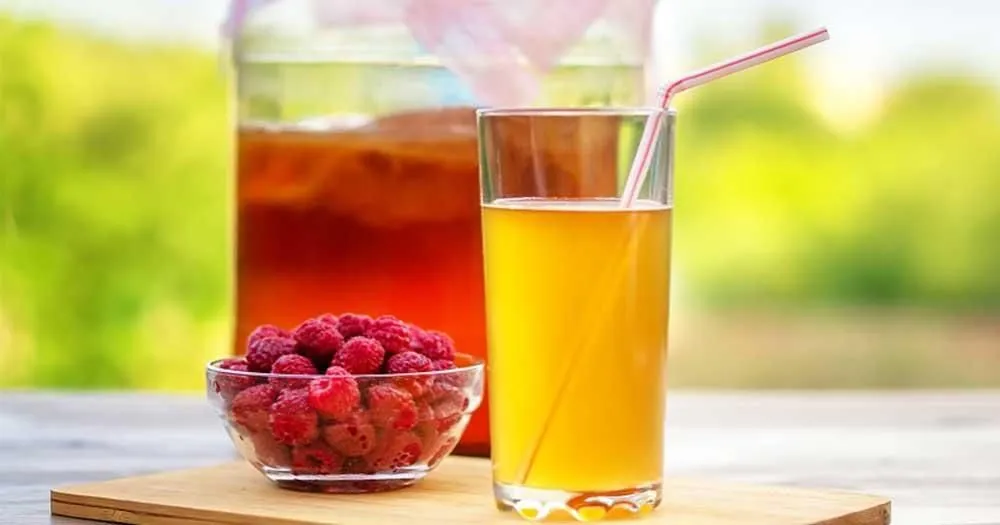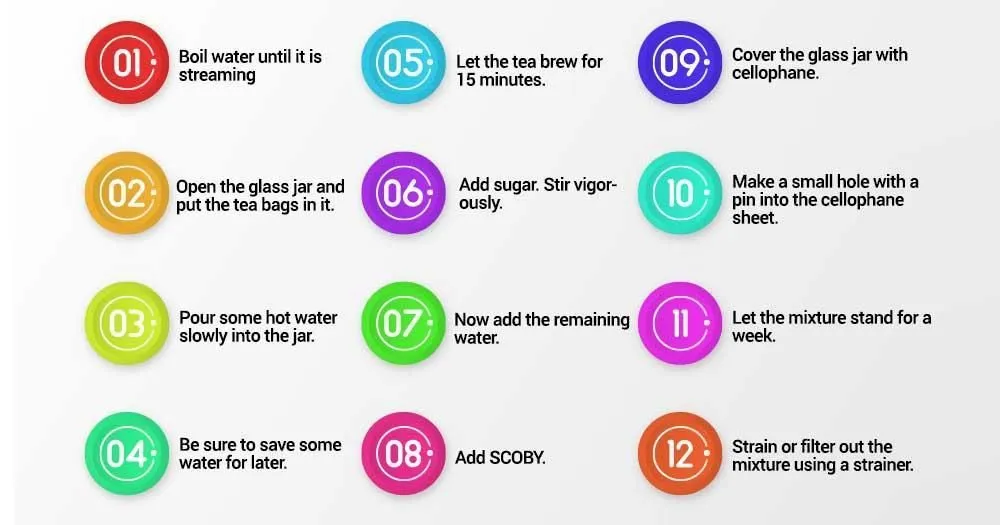Fermented foods are foods that have been preserved through a process of fermentation. In this process, the natural bacteria feed on the sugars and starches in food, which results in lactic acid. This results in preserved foods lasting longer and having high nutritious value. This includes healthy enzymes, omega-3 fatty acids, vitamins, and different strains of probiotics.
You can also note the following facts:
Fermentation is a natural process that may enhance the nutritive properties of food.
It helps in the formation and development of gut-favoring microbes.
Many of the species found in fermented foods are phylogenetically related to probiotic strains.
Microbes in fermented foods may contribute to human health like probiotics.
Here’s an article explaining why all of this is so important for us.
There are a variety of benefits to eating fermented foods, and they all relate to the formation of microbiomes. It is the colony of good bacteria that live in our gut and help in the digestive process. These bacteria help you digest food efficiently, get the most nutrients, and live healthily.
These microbiome systems boost your immune system, keep your gastrointestinal tract healthy, improve your mood and brain function, and help you stay immune. And one of the best things you can do for your microbiome is to eat fermented foods and probiotics that occur naturally.
There are several benefits of including fermented foods in your daily diet. Here they are:
Can be preserved for longer
Help in weight loss
Can reduce inflammation
Rich in nutrients (vitamins and minerals)
Have antioxidant properties
Help in heart health
Promote better health and digestion
Help in digestion
Do not contain empty calories
Are a healthy alternative to canned and fast foods
Such preserved foods last longer than fresh vegetables and they keep the grocery bill down.
Tip: Make sure you read the label and look for the names of the probiotics in the food, and don’t fall for this trap.
People from all parts of the world prefer fermented foods in some form or the other. From shrimp paste in Thailand to yogurt in Europe, nearly every country has reinvented local delicacies in the fermented form.
As mentioned above, these foods or beverages are made by allowing sustained but controlled microbial growth on other foods. This breaks down their sugar components in various food components into useful or digestive acids through enzymatic action. The carbohydrates in the same food are converted into lactic acid.
Let’s take a look at some of the most delicious, and widely available, fermented foods from around the world.
Yogurt has long been popular in Europe and the United States. Made from dairy products, it often has a tangy taste. Make sure you read the labels and find yogurt with strains of probiotics. Many mainstream yogurts these days don’t have health benefits.
Tip: Here’s how to use fruits and yogurts to get more energy.
Made in Korea, kimchi is spicy fermented cabbage. It is served as a side dish at every meal. Growing in popularity around the world, this tangy food promotes weight loss, combat cancer cells, and even fight depression.
This pickled cabbage dish originates from northern Europe. Whereas kimchi is spicy, Sauerkraut has a distinctive sour taste and goes well as a topping on all sorts of different dishes. Its sandwiches are a proper breakfast in Germany and are considered extremely nutritious.
Here is a list of those yeast-treated foods that you can easily make at home. One among them is Kombucha (or the fermented tea) that we shall discuss in detail in the next section.
But here we shall offer a few of those easy-to-make foods that you can try yourself- sauerkraut and kimchi, two of the most popular delicacies from two different parts of the world. Here’s how you can make them.
You would need to start with salt and cabbage.
Shred some cabbage in a bowl and sprinkle some salt on it.
Mesh the two with your hands for a few minutes until the vegetable has lost some water.
Now add some shredded beetroot, carrots, garlic, and ginger and prepare a mixture.
You may add some more salt if you want.
Now cover the mixture in the bowl with a cellophane sheet.
Put it aside for 15 days, this would ferment the mixture.
You may now use this to make tasty and tangy sandwiches.
Shred Chinese cabbage, radish, ginger, garlic, and onions and put them in a bowl.
Add red chili powder, salt, and some lime juice to the mixture.
Cover the bowl with a cellophane sheet.
Keep it in sunlight for a month.
You can now have it with steamed rice or grains, or you could make a stew and have it with eggs. It also tastes just as delicious on its own too.
Both these delicacies offer a great taste, and they will increase your desire to eat something tangy and spicy. Your metabolism rates would be improved too. You may also have them as your evening snacks.
One may experience some side effects of including fermented foods in your daily diet. This could be due to eating them in excess or an allergy to any food nutrient. We recommend checking with a qualified healthcare professional if you have the following symptoms:
Bloating
Acid reflux
Headaches or pains in joints
Upset stomach or weak digestive system
Nausea or vomiting
Histamine intolerance
Mild fever
Intolerance to antibiotics and fructose
Bladder infections
Abnormal BP and blood sugar levels
Throat infections
Reduction of helpful bacteria in the gut
It is important to also maintain a strict watch on your health and fitness, and the same includes your eating and sleeping patterns. Any process of converting carbohydrates in your food to organic acids using microorganisms under anaerobic conditions can court serious health issues. It is important to stand at your guard and consult a healthcare specialist as soon as possible.
We are next discussing the special case of Kombucha or the fermented tea).
Kombucha is a fermented beverage from China. It starts with the fermentation of sweetened tea and acetic acid bacteria, along with specific yeast cultures. This miracle concoction has survived and surpassed many modern-day medicinal cures for common physical ailments. Made of mushroom fungus, it is valued and known for its refreshing taste.
This tea variety contains a vast range of yeast and bacterial species that harbor polyphenols, organic acids, and amino acids. Once you’ve completed the required fermentation process that usually takes about 3-4 days, you may have this gut-healthy probiotic drink.
Kombucha tea is a naturally fermented drink that consists of a living colony of bacteria and yeast, which makes it a great probiotic beverage. It is made with tea, sugar, bacteria, and yeast by adding the resulting mixture to sugar and tea and letting it ferment for some time.
This tea is rich in various minerals and live enzymes. It contains vitamins C, B1, B2, B3, B6, B9, B12. You can also find it full of several other biochemical compounds like oxalic acid, acetic acid, gluconic acid, lactic acid, and fructose.
You can get 0.6 gm fat, 34 calories of energy, 0 gm of fiber or protein, and 5.7 gm of carbs from every cup of this health drink. Kombucha is:
Cholesterol-free
Gluten-free
Low in sodium
Low in calories
Low in fat
It also helps in digestion, mood stability and mental clarity, weight loss, detoxification, sleep issues, candida (harmful yeast) overgrowth, and immune system disorders.
It prevents cancer, improves liver function, and stops hair loss. Many have said that Kombucha is the “elixir of life” because of the vast benefits this drink carries. Anyone who has tried this tea-like drink would agree that it’s one of the hottest new trends in the health beverage industry.
It is not a lengthy process to prepare this fermented beverage at home. Here’s what you’ll need:
2 cups water
2 tea bags
1 glass jar
¼ cup sugar
Some SCOBY
Fine-mesh strainer
Cellophane sheet and rubber band
Here’s how to get going:
Boil water until it is streaming.
Open the glass jar and put the tea bags in it.
Pour some hot water slowly into the jar.
Be sure to save some water for later.
Let the tea brew for 15 minutes.
Add sugar. Stir vigorously.
Now add the remaining water.
Add SCOBY.
(If you do not know what SCOBY is and how you can make it, skip to the second-last section of this blog).
Cover the glass jar with cellophane.
Make a small hole with a pin into the cellophane sheet.
Let the mixture stand for a week.
Strain or filter out the mixture using a strainer.
Now store the resulting liquid in another glass jar. You may drink it as an energy and probiotic drink in the afternoon and evening.
This hot beverage has caffeine but a very less amount of alcohol, the latter is less than 0.5%. You cannot get drunk from it.
Being a fermented food, Kombucha tastes like an effervescent liquid with a tart and pungent flavor. It is sourer than apple cider vinegar.
SCOBY means ‘Symbiotic Culture of Bacteria and Yeast.’ It is a catalyst in the preparation of Kombucha. Here’s how you can make it at home:
Boil some water in a pan.
Add sugar and some tea bags.
Take a glass jar.
Add some pre-made Kombucha to it and pour brewed water into it.
Cover the jar and let it stand for a week.
If you find a jelly-like mass, your SCOBY is ready.
If it isn’t, you might just have to wait for a few more days.
You can buy it from your local natural health food store or make it at home in your kitchen. The latter option would take some time but would put you in control of what you add to it during the fermentation process. It would also create a better taste profile and effectiveness.
The FDA cautions that home-brewed kombucha can have adverse effects, such as metabolic acidosis or an upset stomach due to dangerous bacteria getting into the tea because of unsterile conditions. If buying your Kombucha from someone, make sure of the process and the conditions that they are operating in.



